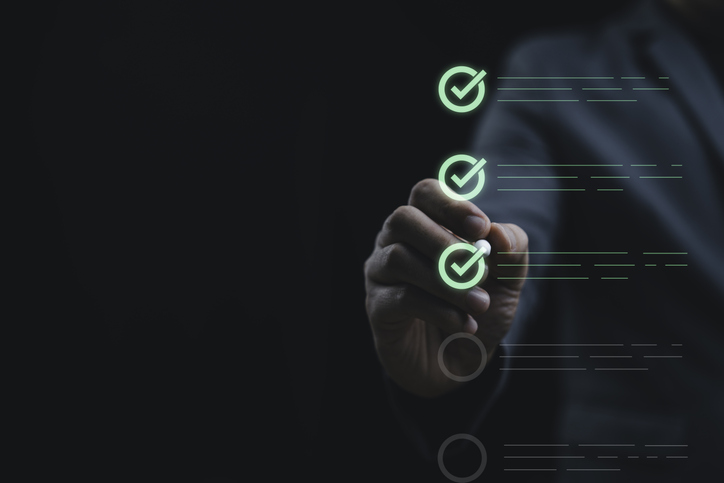2026 is a turning point for procurement leaders as they look to balance efficiency, cost control, sustainability and growth, while facing pressures to digitize processes, adopt AI responsibly, and manage risk across complex supply chains.
McKinsey & Co has been sharing more about the concept of “Procurement 5.0” which centers on digital adoption, AI, supply chain resilience, and stronger supplier partnerships.
But achieving this vision depends on seamless integration between buyer and supplier systems. Without connected data and automated workflows, these goals remain out of reach for organizations still relying on spreadsheets and manual processes.
This blog explores the top 5 procurement priorities in 2026 through an integration lens. It showcases how connected systems, automation, and data visibility empower businesses to achieve these goals and drive value across the organization.
AI within Procurement
AI in Procurement is maturing slowly. While it is increasingly used to support areas like internal process improvement, predictive analytics and supplier risk visibility, it is still a long way from the vision of autonomous agents directly handling sourcing, ordering and invoicing.
Experiments in AI agentic procurement by major players like SAP and Coupa remain conceptual or limited to closed ecosystems. Reliability remains a core issue, as anything less than 100% accuracy isn’t good enough for large-scale transactions.
Steve Frechette, Head of Product at TradeCentric, had this to say about AI processes in B2B commerce: “AI is everywhere right now, but let’s be clear: not every workflow is AI-ready, and that’s okay. When we’re talking about high-stakes transactional workflows—things like revenue recognition, compliance, or customer trust—accuracy isn’t optional.”
With AI agentic procurement timelines uncertain, what can procurement leaders do now that will have an impact in 2026?
The answer: ensure they are connecting with their key suppliers or vendors who already have good data via eProcurement integration.
Integration delivers the immediate efficiency, cost control, visibility and scalability you need in today’s purchasing environment.
Reduce Costs with Smarter Integration
Negotiating better prices only goes so far in saving costs. Substantive, structural cost reduction comes from process efficiency, which means bringing suppliers under one roof, into an integrated buying process.
Integrating procurement platforms and supplier systems is a major source of cost savings:
- Organizations eliminate rogue spend by consolidating supplier interactions within centralized platforms.
- Automation reduces manual data entry, errors and rework, and approval delays.
- This speeds up procurement, reduces costs and ultimately frees resources for more strategic, higher value work.
TradeCentric customer, Mars Veterinary Health, centralized spend through their procurement solution as well as expedited the ordering and invoicing cycle time.
“Previously, the cycle time to deploy a new supplier on Mars Veterinary Health’s homegrown system averaged 6 to 9 months. With TradeCentric’s support, cycle time to deploy a supplier has now decreased by 50%”
- David Karakas, Director of Procurement
As more organizations recognize the value of process efficiency, expect 2026 to bring new focus on total process costs rather than just unit cost of goods.
Diversify to Mitigate Supply Chain Risk
Global uncertainty continues to drive supplier diversification across procurement organizations. A recent Forbes Magazine article highlights the value and importance of diversification in building resilient supply chains.
Buyers are expanding supplier ecosystems to mitigate risk, while ensuring every partner meets compliance and integration standards.
This puts a premium on bringing in suppliers who are already enabled for digital integration. Procurement teams should prioritize suppliers that can:
- Integrate seamlessly to your purchasing system
- Provide real-time visibility and accuracy of products and availability
- Maintain consistent data quality
Building supply chain resilience through supplier diversification hinges on this digital integration.
Deliver Sustainability through Efficiency
Sustainability has been and will continue to be a top priority for the foreseeable future. Eliminating waste, removing paper, and improving processes are top of mind, but sustainability needs to extend much further. It’s about finding more ways of working efficiently across your organization, and engaging suppliers with the most sustainable practices, such as automation capabilities.
Sustainability ties in directly with operational efficiency. By removing redundant processes and eliminating paper-based workflows, eProcurement integration increases efficiency and reduces environmental impact at the same time.
Expect a push toward measurable sustainability, as procurement teams seek partners who can demonstrate tangible traceability, ethical sourcing, and waste reduction.
The Digitization Imperative to Save Costs and Drive Growth
Many organizations still underestimate the cost of manual procurement processes, particularly where they are ingrained in working practices.
Digitization doesn’t just remove inefficiencies; it unlocks new growth potential through scalability and better visibility.
In 2026, expect more procurement teams to move from semi-manual workflows that are “good enough” to fully integrated, automated systems that connect purchasing, finance, and suppliers. The barrier is no longer technology, it’s change management.
Conclusion: A Year to Redefine Procurement Value
The most successful procurement teams in 2026 will be those that connect efficiency, sustainability, and intelligence into a single, unified strategy.
Technology will play a critical role, but the real differentiators will be operational discipline and closer collaboration between procurement, finance, and suppliers.
As organizations move toward smarter, more connected procurement ecosystems, understanding where you stand today is the first step toward transformation.
Our Buyer Value Assessment helps uncover how integration can help you streamline operations, reduce manual processes, and strengthen supplier relationships.
TradeCentric is here to help you make 2026 the year procurement moves from process-driven to performance-led.





